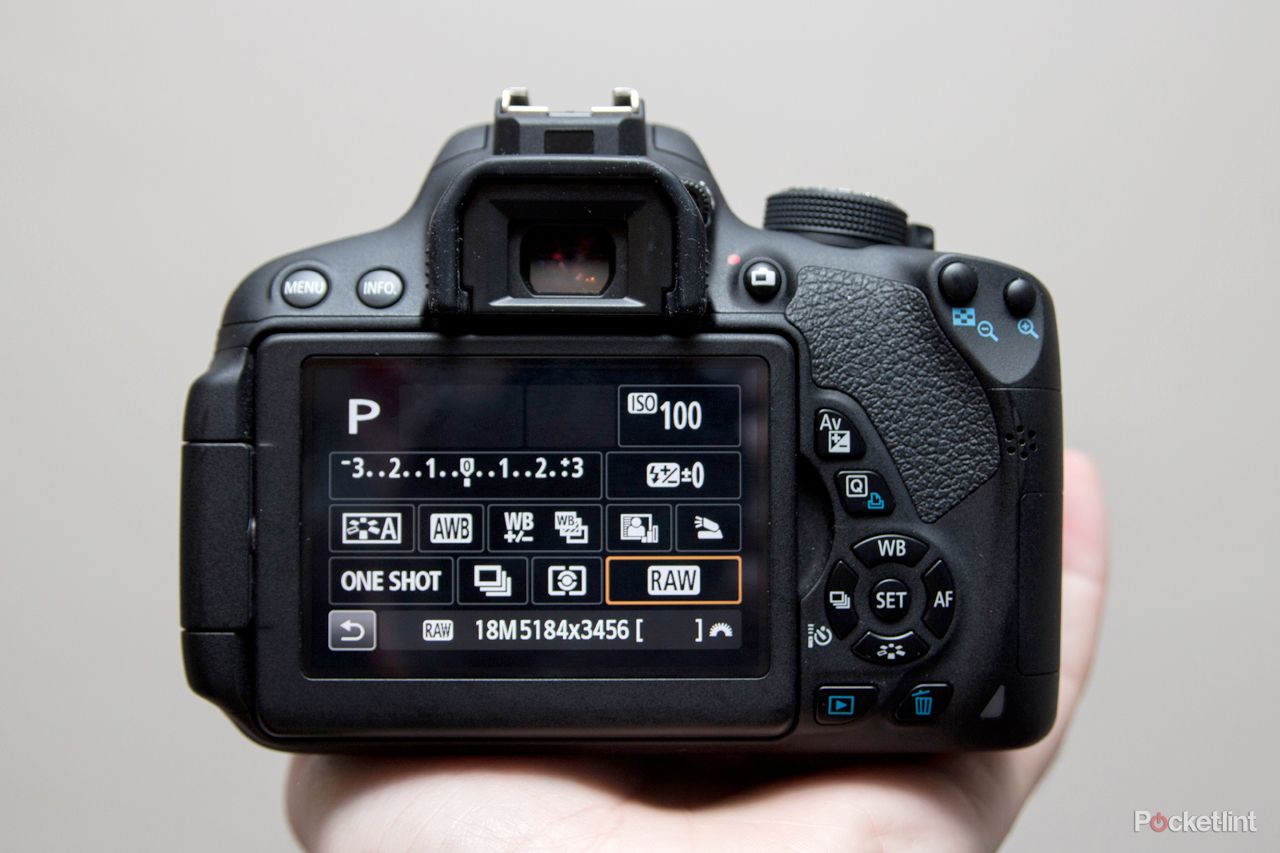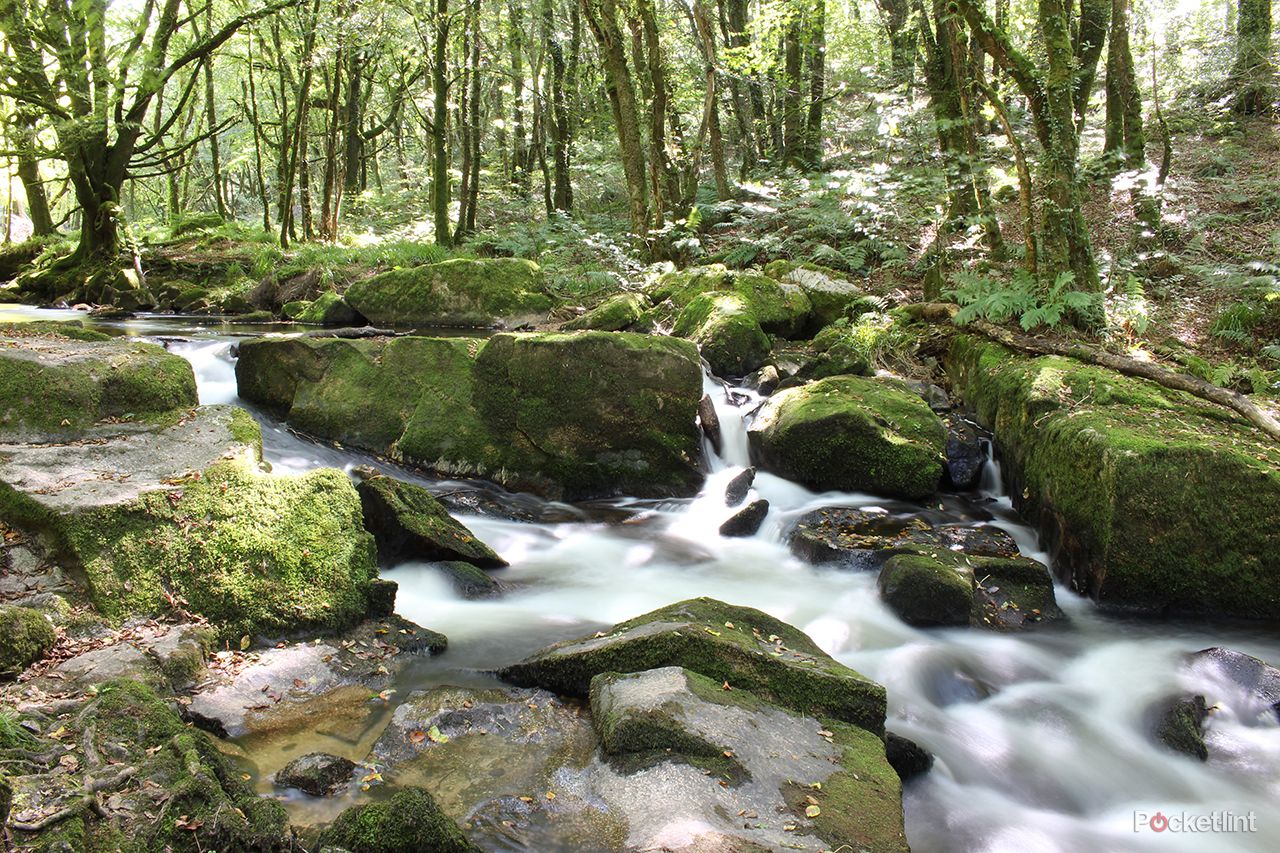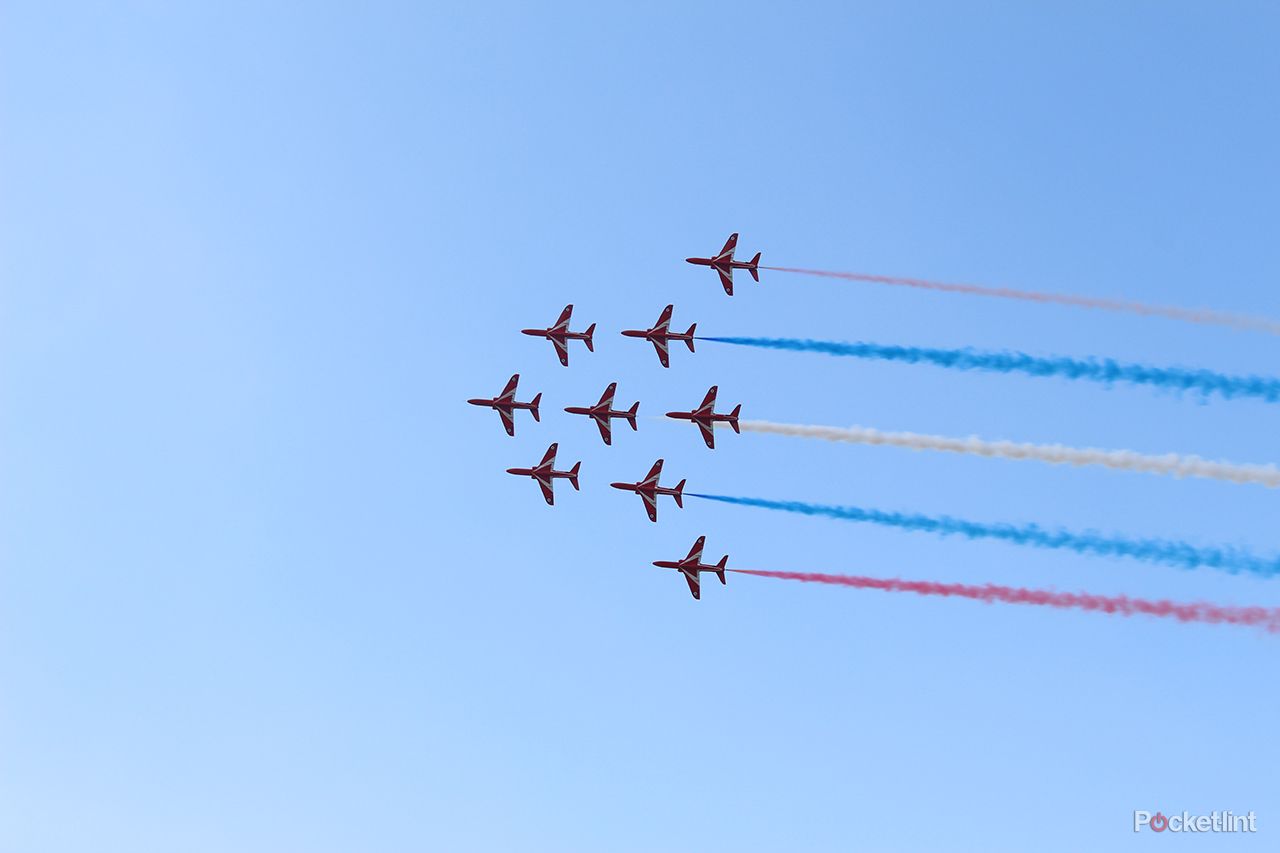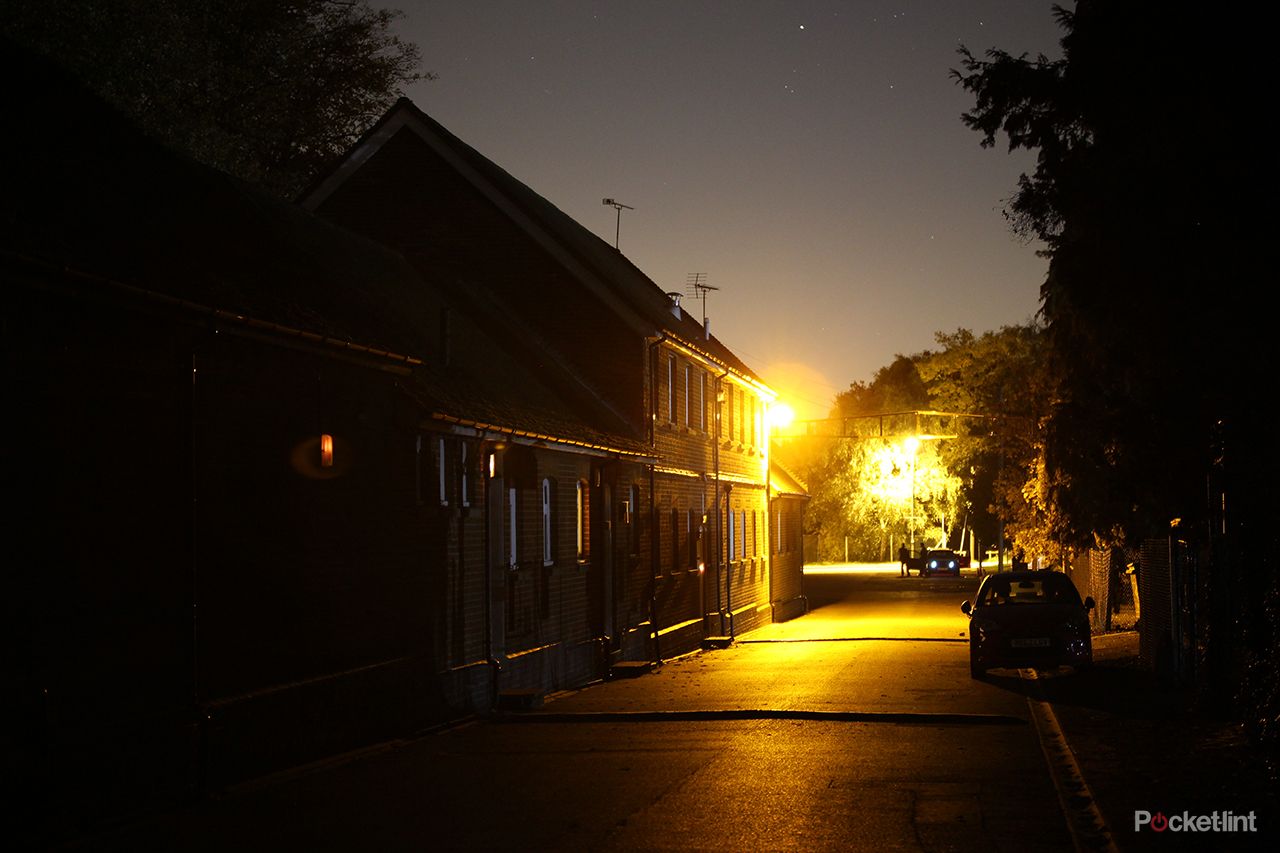The Canon EOS 700D sits in a category of DLSR cameras that Canon says is for beginners. Its apparent stable mates include the tiny EOS M, the 1100D and the 100D, each of which the 700D is superior to in various ways. It also replaces the 650D and, in many cases, can be found for similar prices to the older, now discontinued model.
Our quick take
The Canon EOS 700D doesn't break new ground for this class of camera, nor is it a huge change from the 650D before it. If you own the previous camera, there's little reason to upgrade: it should be the excellent 70D that you set your sights on.
There are just about enough differences between the 700D and the 600D to justify the older model's continued presence in this line-up of cameras, although the newer model brings much more to the party, especially for those interested in video. If you're simply interested in stills photography and not convinced by touch control, then you might find that a good deal on the 600D will serve you just as well.
READ: Best DLSR cameras 2013
With the Canon EOS 700D you know what you're getting. The imaging is great from a camera that's a pleasure to use and approachable for those beginners who want it to do everything for them, through to those looking to use the manual controls it has on offer.
We can't say the Canon EOS 700D is a hugely innovative model, because it's such a small shift compared to its now discontinued predecessor, but it's still a great DSLR camera to use day-to-day.
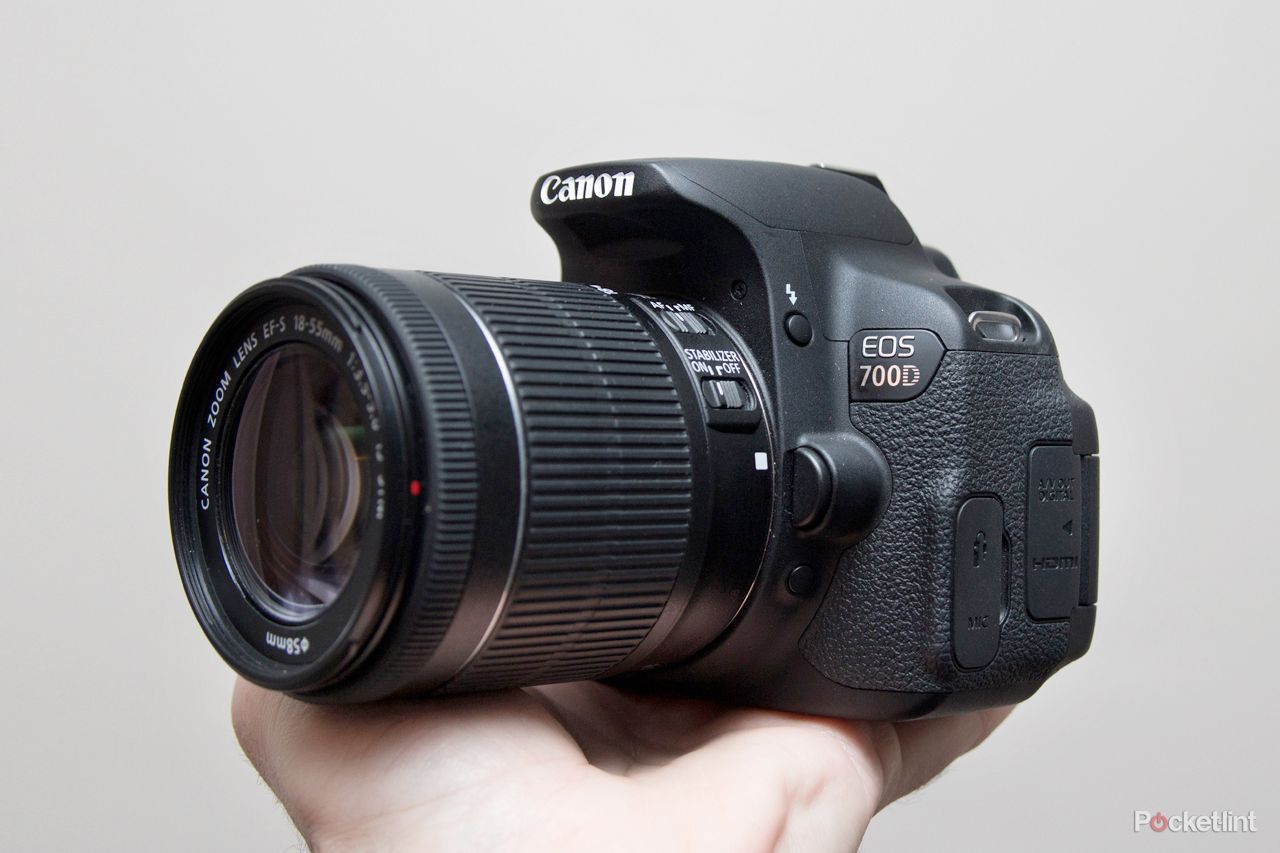
Canon EOS 700D - 4.0 / 5
| FOR | AGAINST |
|---|---|
|
|
Canon EOS 700D
Things then get a little muddier, as it sits alongside the EOS 600D, a camera that shares much the same design and specification, but subtle differences give the 700D the edge: touchscreen, dedicated video record selection, as well as a hybrid AF system that's much faster than two - admittedly quick-succession - generations ago.
Much of the experience is the same as the 650D. But as that was already a good, dependable camera that we liked, it sets the 700D in good stead. Is it the DSLR to go for?
Design
The Canon 700D comes with a freshly coated body, designed to be more durable than previous models at this level. It's been a criticism of more affordable DSLR cameras that things like the plastic grips can peel away, or the matte body finish rubs off to be shiny, but there's no way we could put that much wear on this review model in the time we've had with it.
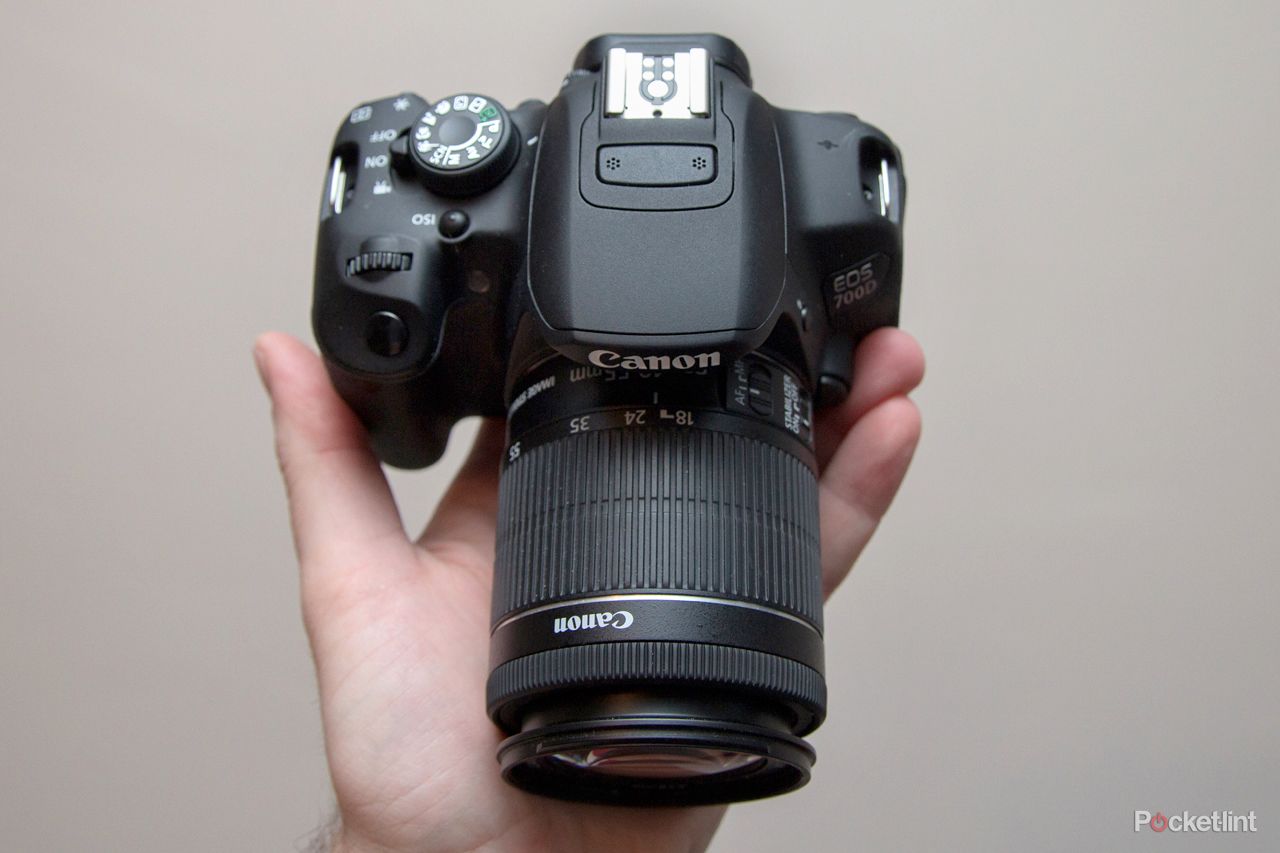
It feels great though. The size of the right-hand grip gives your fingers plenty to cling on to and we like the slightly abrasive finish to the body. It feels serious and although there's no avoiding the plastic looks of the camera, it's nice enough to behold. Definitely better than the 650D.
It's a shame that the 700D's finish doesn't exactly match that of the new 18-55mm kit lens that comes in the box, although there's something chic about having a lens that doesn't quite match your camera and there are plenty of lenses that will fit on Canon's mount. It's like corduroy trousers and a suit jacket. In a good way.
Aside from the cosmetic changes to the camera's finish over previous models, the mode dial now rotates all the way around. It's convenient for those who shift modes often, although we often find that we only really venture into the manual side of the dial.
Video capture is in its position at the top of the on-off switch and if there's one thing we'd criticise about this arrangement, it's that we've sometimes lifted the camera for a shot, and switched to video rather than just turning it on for regular stills shooting.
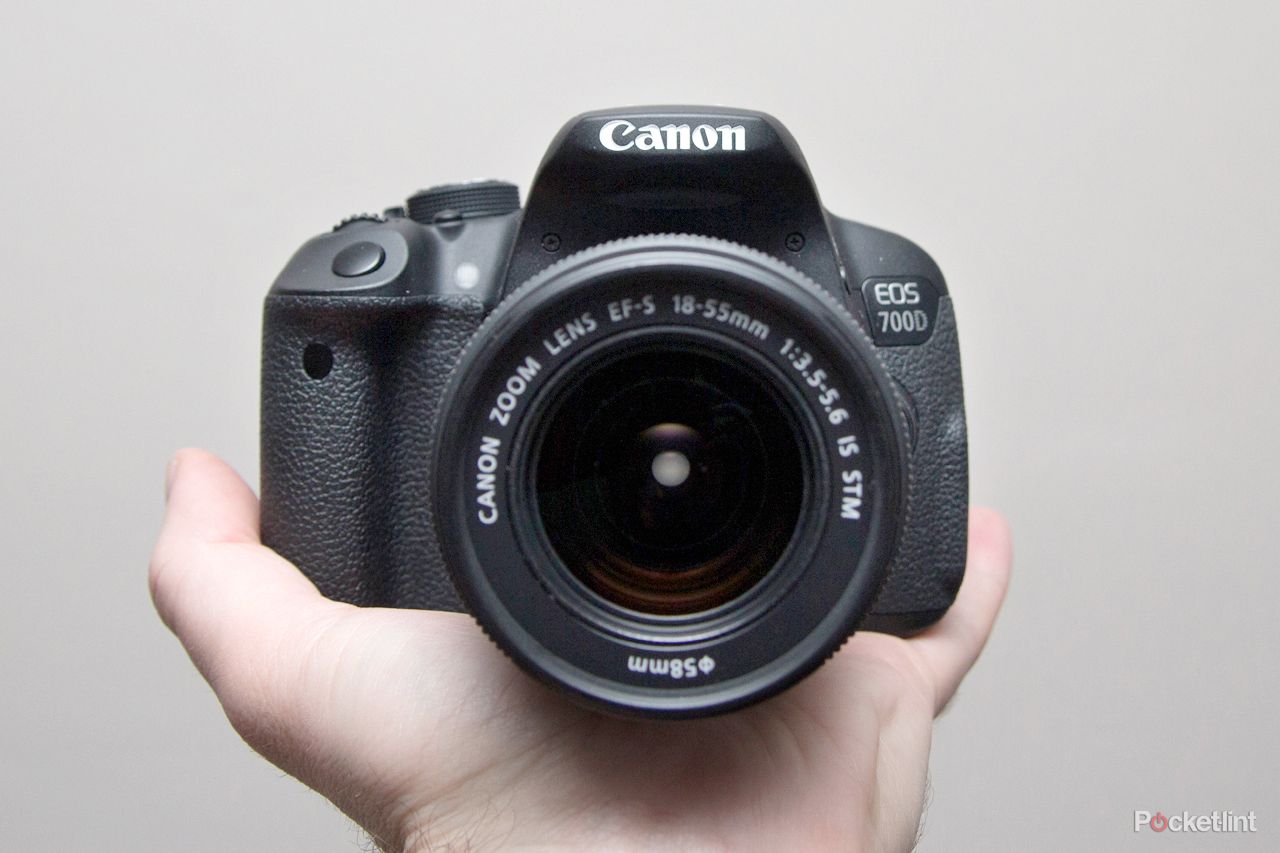
Still, with video capture having much higher billing on DLSR cameras these days it saves awkward button pressing so videographers will be happy. The new 18-55mm kit lens we had on our review model also plays nice with video, offering fast, quiet, focusing that makes many of the older lenses difficult to love when it comes to shooting video.
Display: A touch of class
We originally sniffed at the additional touchscreen on the back of this class of DSLR. Although we love touch from our time living with smartphones, we've always felt that touch on camera could, on occasion, be tech for the sake of tech, as early implementations could be more fiddly than practical.
In the case of the Canon EOS 700D, that's not really true, as touch here adds some useful shortcuts to controls, especially if you're mounting the camera on a tripod. The camera's open menu, access via the normal Q menu path, becomes touch responsive on screen - useful. Although it might lack the glamour of some rival's graphical animation, it lets you see exactly what you're doing with minimal fuss.
In working with touch, Canon hasn't abandoned the traditional layout of button controls, so it doesn't feel like a compromise: there's enough space here for both systems of control, so it's a catch-all situation.
And thanks to the 700D's eye-level sensor, you don't have to contend with your nose touching the screen and changing settings when you lift it to the eye to look through the viewfinder, as you do on some system cameras.
The 3-inch vari-angle LCD display offers a nice, sharp 1,040k-dot resolution, so images look fantastic when viewed on them and its flexibility means it's easier to compose shots high or low, or just fold the display away for protection from scratches in your bag. You can swipe through picture previews or pinch zoom to confirm focus, which works well.
The display gives you 100 per cent field of view (FoV), but the viewfinder doesn't, with only 95 per cent on offer - that means the outermost part of the image you won't see in preview, but will capture. If you step-up to the excellent EOS 70D you get 98 per cent FoV.
READ: Canon EOS 70D review
Although we love the bright, clear viewfinder of the 700D and find it comfortable to use, the competition is beginning to add more and more high-end features, such as digital levels and such, which Canon will probably have to address some time soon to stay competitive on the feature list.
A quality performance
What the EOS 700D is designed to give you, is excellent results with relative ease. It's a camera that gives a beginner enough support to shoot in automatic modes, while exploring the benefits of the manual shooting modes on offer.
At the heart is Canon's familiar APS-C CMOS sensor offering 18-megapixels and backed by the Digic 5 processor. It's identical to that found in the 650D.
Canon EOS 700D review - sample image at ISO 100 - click for 100 per cent JPEG crop
You get shooting speeds at five frames per second (5fps) which isn't hugely fast and the buffering slows things down after about four seconds if shooting JPEG; if you're shooting raw, then continuous shooting slows down after six shots, which is a little over a second of snapping. Shoot JPEG and raw together and you'll only get three shots before things slow dramatically.
That's the real limitation of this camera and, if priced at its £750 RRP, competitor compact system cameras are working hard to sell themselves as faster shooters at around the same price point. But at the time of writing, and after the initial release of the 700D, its now £585 price tag is far more manageable.
When it comes to shooting the autofocus sensor offers up nine focal points and focusing is generally swift and dependable, with manual selection being just a tap away using the touchscreen if the camera won't pick the point you intend.
Canon EOS 700D review - sample image at ISO 100, +1EV - click for 100 per cent JPEG crop
But that's not all: another big difference between the 600D and the 700D is that the newer camera has a new hybrid AF system to speed up focusing in live preview and video capture modes. It's based around on-sensor autofocus pixels to make for a more diverse method of capture than just the aforementioned nine autofocus points provided by the AF sensor.
As we mentioned, the new kit lens is well suited to this swifter response, especially in video, making for a great pairing, and some lovely swift and smooth focusing. It's not quite on a par with some of the mirrorless cameras, but it's getting better all the time.
Image quality
One of the recent additions to this level of camera is the ability to crank the sensitivity up to ISO 12,800 - and it's one of the real differences between the 700D and the 600D, which stops at a modest ISO 6400. There's an additional 25,600 high setting, although this is buried in the menus and, frankly, best avoided.
Canon EOS 700D review - sample image at ISO 800 - click for 100 per cent raw crop
You get plenty of control over ISO, however, with a dedicated button on the top, as well as the option to limit how high the ISO range will run in auto from 400 through to 6400. This means you can pick a level where you feel the resultant noise isn't too aggressive to spoil the pictures you're taking. The results are good up to about ISO 1600, after which the noise becomes much more apparent.
Those high ISO settings will let you grab shots in low-light conditions, but if you're after the best results, keeping it to the lower settings is advisable.
The Canon EOS 700D is a good performer when it comes to quality, however. We continue to be impressed with day-to-day performance and the results straight from the camera. Autofocus is fast and getting faster and avoiding those tempting higher ISO settings, you get good reliable performance from it.
READ: Canon EOS 650D review
The experience is very much like the EOS 650D, so while this is a new model, there's the slight sense that Canon hasn't moved things on though. Rival compact system cameras seem to be more aggressively introducing new features and technology as Canon seems to be moving more slowly in this department - even if it can shout about solid image quality performance.
Canon EOS 700D
To recap
The Canon EOS 700D doesn't break new ground for this class of camera, nor is it a huge change from the 650D before it. If you own the previous camera, there's little reason to upgrade: it should be the excellent 70D that you set your sights on. With the Canon EOS 700D you know what you're getting: the imaging is great from a camera that's a pleasure to use and approachable for those beginners who want it to do everything for them, through to those looking to use the manual controls it has on offer.

